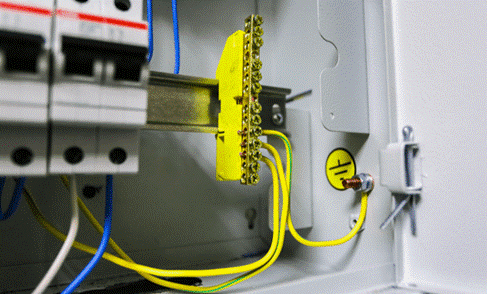Key points of this article:
The relationship between grounding, EMI, and power quality.
The difference between safety grounding and EMC grounding.
Design considerations for EMC grounding.
Grounding, EMI, and power quality are closely related; Power quality is affected by various events, including electromagnetic interference (EMI). Fortunately, grounding the circuit can alleviate the adverse effects of EMI. Grounding provides a low impedance path for electromagnetic interference. When the system is properly grounded, EMI will detach from critical equipment, thereby improving power quality. In this article, we will further explore in detail the relationship between grounding, EMI, and power quality.
Grounding, EMI, and Power Quality
Sensitive devices and devices in dynamic environments are prone to electromagnetic interference. Electronic devices, control circuits, signal and power cables, and other related systems that generate electromagnetic fields interact through electromagnetic interference, disrupting normal operation. The EMI that interacts with electrical and electronic circuits poses a serious threat to power quality.
When electrical and electronic circuits receive power of a specific amplitude, frequency, and phase, the equipment can operate as expected, and the quality of power is also guaranteed. If EMI in the circuit interferes with the amplitude, frequency, or phase of the system voltage, then the power quality will be affected.
Grounding is one of the methods to ensure power quality by reducing EMI. Proper grounding can eliminate electromagnetic interference and ensure safe operation and electromagnetic compatibility. Grounding determines how the system should respond to unexpected faults, transients, and electromagnetic interference, and provides a low impedance path for high-frequency EMI currents and voltages to control conducted and radiated interference in electronic circuits.
Grounding provides a low impedance path for electromagnetic interference.
The difference between safety grounding and electromagnetic compatibility grounding
Before discussing electromagnetic compatibility (EMC) grounding, we first need to separate it from the safety grounding area. Electromagnetic compatibility grounding and safety grounding are different. Safe grounding is to protect personnel operating equipment. In safe grounding, the metal casing of the equipment is usually connected to the grounding wire of the ground, so that short circuit or fault current flows to the ground without harming the user. However, the purpose of EMC grounding is to provide a low impedance current path for EMI and noise currents. The reference for EMC grounding is not necessarily the grounding wire of the ground, but the shielding layer or conductive plane.
Grounding and electromagnetic compatibility
EMC grounding defines a zero voltage reference that connects circuits and other metal enclosures and components to this reference through low impedance connections. The grounding structure prevents accidental interference and reduces the sensitivity of the equipment to EMI. When conducted interference and immunity problems occur, the earthing system not only provides a zero voltage grounding reference, but also provides the path with the lowest impedance for the unobvious EMI current. The electromagnetic compatibility grounding structure can only withstand EMI noise current and fault current. By properly utilizing the grounding structure, a circuit with sufficiently low impedance can be formed to carry EMI current and fault current, thereby controlling the unexpected voltage generated by EMI.
Design considerations for EMC grounding
Build a grounding structure using conductors at the target frequency. The design focus of the grounding structure should be to define the local zero voltage reference at the system frequency.
Design the grounding structure as a reference grounding plane for large metal components in electronic circuits. The design of grounding structures should not be confused with the design of equipment shielding shells.
Do not design the grounding structure to carry the phase current or working current in the circuit. The current flowing through the grounding structure can cause magnetic flux wrapping, thereby inducing voltage. Induced voltage can drive grounded structures relative to other components, especially at high frequencies. The design of the grounding structure only needs to carry unexpected currents.
Understanding the relationship between grounding, EMI, and power quality can help designers achieve electromagnetic compatibility in electrical and electronic equipment. The reference ground plane created by EMC design engineers in product design plays a crucial role in eliminating unexpected EMI and noise currents.
|
Disclaimer: This article is transferred from other platforms and does not represent the views and positions of this site. If there is any infringement or objection, please contact us to delete it. thank you!
中恒科技ChipHomeTek
|
